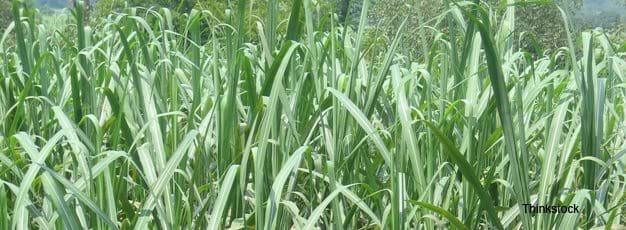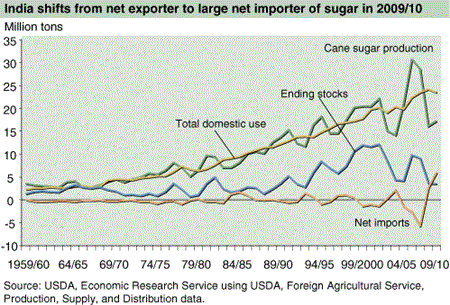Indian Sugar Market More Volatile

The increasing volatility of Indian sugar production and trade has been a significant factor in the recent surge in global sugar prices. Sugar production in India, the world’s second largest producer, dropped sharply in the 2008/09 marketing year (October/ September), and will likely remain low in 2009/10, shifting India from net exporter to a large net importer.
Swings in India’s sugar trade are increasingly significant for world markets—record 2007/08 exports amounted to 11 percent of global exports, and forecast record imports in 2009/10 account for 12 percent of anticipated global imports. Fluctuations in Indian trade are one more source of disruption in a world sugar market already adjusting to rising European Union (EU) net imports following the reform of EU sugar policy that began in 2006.
The drop in Indian sugar production—from a record 30.8 million tons in 2006/07 to 16.1 million in 2008/09 and an estimated 17.3 million in 2009/10—is due primarily to a policy-induced cycle, complicated by the fact that sugarcane is a 3-year crop that responds slowly to price signals. India’s central and state governments set support prices for sugarcane with a primary goal of protecting returns to growers, resulting in no explicit link to domestic or world sugar prices.
High support prices created an oversupply of sugarcane and falling domestic sugar prices in 2006/07 and 2007/08. Sugar mills, caught between high support prices for sugarcane and falling market prices for sugar, defaulted on payments to growers, undermining incentives to plant sugarcane. Unusually large increases in support prices for wheat and rice, which compete with sugarcane for irrigated land, likely exacerbated the shift away from sugarcane production in 2008/09 and 2009/10; poor 2009 monsoon rainfall also contributed to lower 2009/10 yields.
For 2010/11, the outlook is for a strong recovery in sugarcane and sugar output, which could sharply reduce the need for additional imports by India. The central and state governments have announced large increases in support prices to boost plantings for the 2010/11 crop. In addition, high domestic sugar prices have strengthened the financial condition of the sugar mills and their capacity to pay growers.
In the longer term, India has the capacity to boost both area and yields of sugarcane, and the Government and sugar industry are discussing policy measures to moderate swings in production and trade. One proposal is to shift to formula-based pricing that links sugarcane prices to the prices of sugar and other byproducts. However, there does not appear to be a consensus on any proposed measures that might reduce future volatility in sugar production and trade.
Indian Sugar Sector Cycles Down, Poised To Rebound, by Maurice Landes, USDA, Economic Research Service, April 2010


